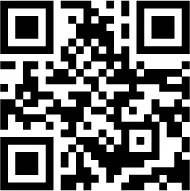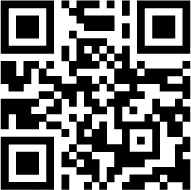Programming as Praxis
Library programming at its core is a series of specialized events or learning experiences. Ideally, programming is culturally relevant and tailored to the needs and interests of the patrons, whether they are first-year college students, young adults, or adolescents just starting their journey into secondary school.
Effective Library Programming for Tweens and Teens
Programming for teens and young adults is a catalyst for learning and exploration. It is also where we see practice and pedagogy come together—a term education practitioners refer to as “praxis.” Library programming activities and learning experiences should pique students’ interests, capture their imaginations, and advance and deepen their learning.
Piquing Interests of Students
Programming should appeal to tweens and teens and their interests. For example, if your teen student population is already part of the workforce, working part-time in a myriad of sectors, a program on creating a winning resume for the workforce and college or a Get Interview Ready program may pique their interests. The librarian can not only instruct them on how to craft a winning resume but also show them technology tools they can use to build a resume, guide them to advice on how to prepare for an interview, and suggest resources that will assist them further. After you complete the programming reflection piece at the beginning of this chapter, you may have ideas of what will pique the interests of students and patrons at your library.
Capturing the Imagination
Library programming should capture students’ imaginations and generate new ideas or new questions of inquiry. Aspire to create programming in which tweens and teens will walk away inspired to imagine, think of possibilities, and ask new questions. As a librarian, you can guide students in the right direction to further explore the subjects and topics that have captured their imaginations. Capturing the imagination can lead to new discovery and new learning.
Inquiry is a major part of instruction, particularly in Advanced Placement and International Baccalaureate courses, as inquiry is taught from elementary with the primary and middle year programs and then continued through high school when students take on writing the extended essay. Students often select topics that have captured their imagination and that they wish to research further, which leads to the next component of effective programming: advancing and deepening learning.
Advancing and Deepening Learning
All libraries can serve as the place where teens can advance and deepen their learning through programming. According to its mission statement, the Zula B. Wylie Public Library in Cedar Hill, Texas, seeks to “be the community place that acts as the Door to Discovery connecting our culturally rich and diverse community to resources and services that promote lifelong learning, personal growth and development, and awareness of the arts.”
Consider the mission and vision of your library as you develop programs to advance and deepen the learning of tweens and teens. Students can take advantage of what the library has to offer and search the collections and online resources to obtain the answers to their questions, thereby advancing and deepening their learning. They can then go into the community to further their knowledge.
Now that you know it is important to define exactly what programming means, it’s time to ask why programming is critical for you and in your library, and to establish ideas for goals you wish to achieve through library programs.
Start with the Why
In many sectors, a key concept in professional development is finding your why. Simon Sinek’s TED Talk “Start with Why,” and his 2017 book Finding Your Why helped to popularize this concept (TEDx Talks, 2009). Everyone will have a different why depending on the campus or type of library you work in and the patrons you serve. During the 2019–2020 school year, librarians in the school district where Valerie works were asked, “What is your why? Why are you doing what you do, and how do you do it?”
What does finding your why mean, and why is it important? It is a reflection on the purpose of your work as a librarian and the outcomes you desire to see as a result of this work. Change is a constant in any profession, particularly professions that are rooted in service to the community. Libraries are no different, as they operate within or alongside many sectors: K–12 and higher education, city or county governments, health care, and more. No matter what type of library you serve in, it is important to take a step back and reflect on the purpose of library work and library programming.
Start this exploration by asking the following questions. In your answers, you may discover things about yourself that will help guide you in your path and help you develop a clear set of goals.
Questions to Help Define Your Why
Reflection questions such as “Why are you doing what you do?” may also include:
• Why did you become a librarian, and what are the professional goals you set for yourself to achieve?
• What is the essence of your work?
• What motivates you to do the work you are doing in the library?
• Who is the community you serve, and what are their information needs, educational needs, personal needs, and goals?
Similar questions can be applied to library programming:
• Why is programming critical in your library?
• What results do you want to achieve as a result of library programming?
Additional key points for reflection are:
• What brings students or patrons to the library?
• Did a program or event further their learning?
• What made it such a positive experience that they returned to the library?
To take the reflection further, examine why programs are held in the library:
• Are programs just to mark an occasion, such as a change in month and season?
• Is the reason for organizing programs curriculum-driven?
• Is a particular program the trend in libraries, in vogue at the time? That is, are programs created due to a current event or current trends, such as a new film?
The answers, of course, will vary depending upon the type of library and the population it serves. Curriculum instructional needs; student/patron interests; community interests and needs; technology, its availability, or even lack of; and funding all have an impact on library programs.
After reflection, seek out a framework from which to build programming upon, such as the ISTE Standards.
Standards and Library Programming
Standards can serve as a framework or a basis for library programming. In school state curriculum standards—for example, the Texas Essential Knowledge and Skills (TEKS) or the Common Core Standards that are used in various states throughout the country—are the basis of instruction. Curriculum standards basically state what educators should teach students at each grade level. The standards can also be tied to library programming. In schools where librarians are required to create lesson plans that include what state standards are covered, librarians can also tie standards to library programs and events.
In writing a lesson plan for library programs, create a SMART (Specific, Measurable, Achievable, Relevant, and Time-Bound) goal for programs that incorporate the standards, stating what the students and patrons have learned or what they will be able to do after attending the program. Public librarians can do the same in collaboration with school librarians and incorporate state curriculum standards and national standards from professional organizations such as ISTE, American Association of School Librarians (AASL), Future Ready, or Association of College & Research Libraries (ACRL), depending on the type of library and the patrons served.
AASL Reading Standards
The American Association of School Librarians (AASL) has developed some standards for school libraries to adhere to when designing programming. These can be helpful in thinking about your programming and to advocate for your goals in terms of the standards.
For example:
Inquire. How will programming support students’ learning to inquire about their world through fiction and nonfiction?
Include. What efforts does library programming make to include students and community members from historically marginalized or disenfranchised groups (for example, special education, English language learners, or visually impaired students)?
Collaborate. How do students collaborate with one another in library spaces (for example, creating digital book reviews)?
Curate. How are students included in the process of curation?
Explore. What library programs encourage students to explore the world outside the physical or virtual library space (for example, collaborating with local museums and organizations offering programs for young people)?
Engage. How are young people engaging others in the world around them through sharing their experiences in the library (for example, community book clubs or whole-school reading initiatives)?
ISTE Standards for Educators
The ISTE Standards for Educators can be used by librarians as a framework to develop effective and successful programs for all types of libraries that serve teens and young adults. The shift to online programming that libraries were forced to make due to the COVID-19 pandemic proved to be a challenge to some librarians. The need to innovate and become tech savvy in a short amount of time definitely presented a challenge. However, many were able to make the transition and build on their technology integration skills by earning certifications and participating in tech webinars during this time. It has never been more important to the future of library programming and library services to integrate technology and innovation in programming instruction for the digital realm than it is now.
The following ISTE Standards in particular stand out for programming from the librarian’s perspective.
ISTE Standards for Educators
| 2.3.b. | Establish a learning culture that promotes curiosity and critical examination of online resources and fosters digital literacy and media fluency. |
| 2.4a. | Dedicate planning time to collaborate with colleagues to create authentic learning experiences that leverage technology. |
| 2.4.b. | Collaborate and co-learn with students to discover and use new digital resources and diagnose and troubleshoot technology issues. |
| 2.4.c. | Use collaborative tools to expand students’ authentic, real-world learning experiences by engaging virtually with e... |



